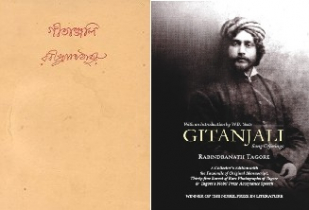By Sajeeb Sarker
Magnum Opus
Media School August 29, 2020

Geetanjali (1910; English translation in 1912) is the `Magnum Opus` of Rabindranath Tagore.
Magnum Opus is a Latin term that means 'great work'. It is popularly translated in English as 'Masterpiece'. The term magnum opus, or masterpiece is usually used to refer to an artwork (or something similar) that is the best or greatest creation ever of an artisan. In easy words, the greatest work or creation of a person's career is considered to be that person's magnum opus or masterpiece.
When a piece of work is referred to as the masterpiece of someone, it is necessarily meant to praise its outstanding creativity, skill, profundity, or workmanship of that particular work. So, an exceptionally good piece of creative work can be referred to as that person's masterpiece: the magnum opus.
This term can be used in a variety of contexts including artwork like painting, and literature. For example, in painting, 'Mona Lisa' is considered to be the masterpiece (magnum opus) of Leonardo da Vinci (1452–1519), the Italian polymath of the High Renaissance who is widely acknowledged as one of the greatest painters of all time. Similarly, 'Pather Panchali' (1955) is considered to be the magnum opus of Satyajit Ray, and 'Gitanjali' of Rabindranath Tagore.
Resources
Lichfield, John (April 2, 2005). "The Moving of the Mona Lisa". The Independent.
Microsoft Encarta: Masterpiece.
Oxford English Dictionary (OED): Masterpiece.
Wikipedia.


